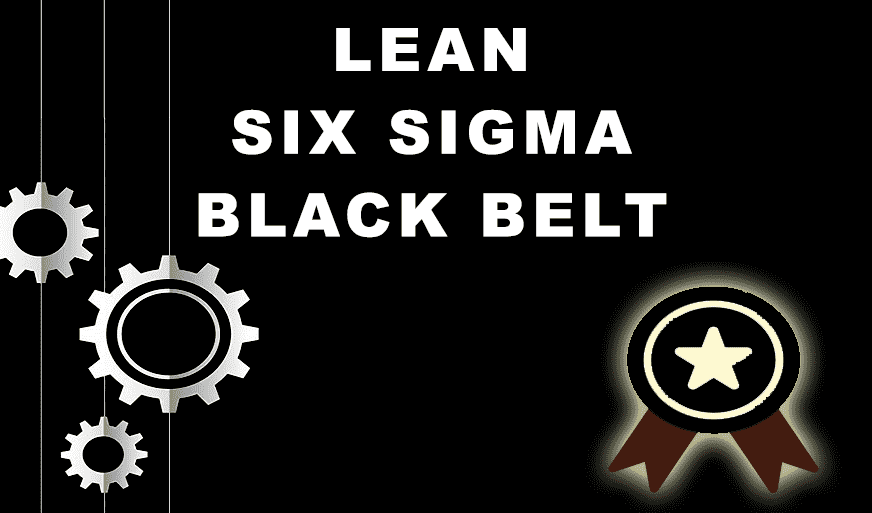Leadership vs Management - The Ultimate Guide
-
 By Jagadish Jaganathan
By Jagadish Jaganathan - Published on May 9 2024

Table of Contents
Leadership vs Management - Key Differences
What is the difference between Leadership and Management? These days, most organizations encourage managers to act as leaders; in fact, they even try to inculcate leadership qualities in all their employees to instill ownership, and leaders have come to manage vast operations.
Since the dawn of civilization, there have been leaders who have changed the world with their ideas and thoughts and managers who have built the world by achieving the tasks they have undertaken. So what makes a leader, and what makes a manager?
Leadership and management are essential qualities to achieve goals in life, be they personal or organizational. But these terms are not the same. In this article, let us discuss in detail the key differences between leadership and management.
About Leadership
Leadership is the quality of an individual, group, or organization to lead or influence others. Leadership can also be defined as a relationship in which the power of one party promotes change or movement in the other. It is both a research area and a practical skill.
Leadership is all about getting people to believe and invest in an idea so that they will work willingly and enthusiastically to achieve it. Though leadership is not the same as management, it is one of the major components of management.
While there is a lot that goes into making a leader, there are few identifiable traits that have been proven to be associated with leaders, here are some of the qualities of a leader,
- Honesty and Integrity are the most important qualities of a leader. If people need to believe in a person or team they would want to know them and know their thought processes, ideas, and ideals. By being honest a leader can have a transparent approach to his vision and can inspire others to take part in his journey.
- Vision is the most basic and important aspect of any endeavor. Without a solid vision, no undertaking will reach its end goals. A clear vision will help you understand where you are. Where you are heading to? And how you will get there? A leader must be someone with a clear vision to guide others towards the vision.
- A leader never asks or orders anyone to do anything instead he inspires people to work alongside him. Leaders believe that inspired individuals can share the vision and contribute to the bigger picture.
- Leaders always challenge the norms, and they don’t conform to the existing state of things. Leaders strive to institute change to bring improvement.
- Communication is an important skill for leaders. They must be able to communicate their visions, goals, and what they stand for in the grand scheme of things.
About Management
Management is commonly known as the art and science of managing the resources of a business. It is the administration of the organization, and it could be a business, non-profit organization, or government institute.
It is also a necessary skill to get things done by others by utilizing the available options. One of the major differences between Management and Leadership is that management can be only applied to a formal or organized group of people. Leadership can be applied to both formal and informal groups of people.
Read more about the Project Management Complete Guide.
Managing is about administering and making sure that the everyday operations are running as per the expectations of the business. Managers are responsible for carrying out the functions like planning, organizing, leading, and controlling.
Here are some of the traits and qualities of a manager,
- Executing a vision – the main function of a manager is to satisfy the needs of stakeholders and increase profit. But an organization is more than a profit-making venture, every organization has a vision and a manager is responsible for achieving this through strategic planning.
- Ability to direct – managers are required to run a wide range of activities based on their specialties. This means the day-to-day work efforts, reviewing resources, and anticipating the needs.
- Process knowledge – management is a broad field of study, and every organization has three levels of management lower, intermediate, and higher. Irrespective of the level a manager is required to possess in-depth knowledge of the process they need to manage.
- People Management – people are the biggest asset to any organization. So one of the main functions of a manager is to look after their team, help them grow, develop their skills and expertise, and alleviate their concerns.
Key Differences Between Management and Leadership
As rightly mentioned by Stephen Covey, Effective leadership is putting first things first and effective management is carrying it out with discipline. In this section let us discuss the five key differences between management and leadership.
Leaders set the vision and the Managers follow it
When it comes to an organization's goals and missions, leaders and managers have different roles to play. Leaders are the ones with vision; they have an idea of how the organization is going to function, where the organization is heading, etc. Though leaders set the vision and draft the mission for the organizations they cannot achieve the goals all by themselves, hence the management comes into the picture.
Managers are the doers and they are responsible for communicating the organization's goals and vision to all the employees working in it. They need to embody the vision and implement it in all the processes they are running. Most of the time, the leaders might be involved in other high-priority tasks hence it falls under a manager’s responsibility to communicate organizational goals.
It is important to have a team of employees who are fully informed and aware of the organizational goals and standards; it will instill a sense of ownership in them and will increase productivity and reduce attrition.
Leaders think about ideas and Managers think about the execution
While managers are required to think rationally and control the resources to produce quality output, leaders are always on the lookout for new ideas, or the next big ideas that might change the way they are working and result in great profit and growth. But again, it is the managers who will work on the ideas and break them down into workable strategies. So leaders focus on ‘what and why’ and managers focus on ‘how and when.
Leaders while looking for new ideas might also drive changes within the organization. A leader must inspire positive changes in the employees to work towards the common objective. This can be achieved by effective communication with the stakeholders.
A manager’s responsibility is to fulfill the task that satisfies the leader’s vision. They are responsible for finding the best way to implement the vision, working with different teams, and making sure they align with the goals and achieve efficiency. They also need to control the process, communication flow, tools, and information. Everyone in the organization needs to share the vision of the leaders, but that does not mean everyone needs to know every detail. So it is the manager’s responsibility to control the aspects and keep them in the right place and on track.
Leaders inspire people and managers drive their success
Even though the leaders are the ones inspiring people, it is the managers who work with them and are responsible for the work environment, career growth, and overall job experience. Most of the time managers are solely responsible for employee engagement and accountable for the success and productivity of the team.
If the employees are not inspired by their leaders, no matter what the managers do they cannot steer them toward better productivity. So a lot depends upon how the leaders influence the organization. Leaders need to develop a personal style through self-reflection, authentic communication, and continuous feedback. While managers direct the employees toward the vision, it is the leaders who can empower people to pursue the organization’s initiatives.
Two-way communication is very important for the effective functioning of the organization and the communication flows need to follow standard guidelines. The communication between leaders, managers, and employees needs to be clear and transparent. And there must be opportunities for company-wide communications.
Leaders Look Into the Future and Managers Work in the Present
Managers have their eyes on the current happenings of the company and the leaders are on the lookout for what’s next. The manager’s main goal is to achieve the objectives of the operations by implementing processes and procedures around the budget. They need to break the objectives into tasks and implement strategies to complete them within a specified timeframe.
Leaders will be working on future opportunities to capitalize on them. However, the leadership’s vision cannot be put into action if there is no ground to provide the workforce and resources. The leadership should effectively communicate the vision to the managers and employees so that everybody is working towards the same goal. Future opportunities always depend upon the current performance, so it’s a collective effort.
An employee does not work only for the paycheck; in fact, what keeps most employees in the same organization for a long time is their commitment to the organization and the sense of purpose the job gives them. So it is a leader’s responsibility to include everyone in their journey of progress.
Leaders Shape the Culture and Managers Endorse It
Working environments have come a long way since the emergence of systematic organizations. And today work culture plays a major role in the overall well-being of companies. Culture is a system of beliefs and behaviors that shape an organization's approach to getting work done.
Organizations focus on efficiency and sometimes lose sight of the vision and resort to extreme measures that border on inhumanity. Organizational culture must be aligned with the vision and values that it stands for. Leaders, managers, and employees are responsible for creating a healthy work culture.
But it’s on the leader’s part to uphold the core values of the company and organization's culture through actions, communication, and decisions. A leader’s skills and style will heavily influence the employees to take up the culture. And the manager’s responsibility is to support the culture by helping their teams.
Where do Management and Leadership Intersect?
So far we discussed in depth the key differences between leadership and management. And it is visible that there are a lot of overlapping functions in them. May leaders have successfully managed organizations and managers have risen to become leaders. And there are three main areas where the duties and responsibilities of managers and leaders overlap.
Communication – communication is the key to success in any process. Since managers and leaders occupy the higher echelon of the organization, they are responsible for keeping the employees informed about the goals, mission, and objectives.
Problem-solving and decision-making – these are essential qualities to run a business, be it the leaders who take care of the bigger picture or the managers who manage the day-to-day activities. Running a business requires quick thinking and analytical skills to overcome the problem and make important decisions that could make or break the deal.
Change and crisis management – leaders and managers work together to implement change in the organization, and their functions are interdependent. And at the time of crisis, irrespective of their roles or designation they need to work to improve the situation.
Conclusion
Leadership and management are important aspects of running a business, and they are interdependent. Managers need to have leadership qualities to work with their team and achieve the target, and so do leaders who are required to execute processes and operations. The corporate world tries to infuse a culture where every employee has leadership qualities, including managers. This overtime blurs the difference between leaders and managers. With this, every employee will have a sense of ownership of the business and work toward the organizational goal.
You need both managerial and leadership qualities to succeed in your career, irrespective of the domain. There are a lot of ways to enter the field of project management, but professional certification training will help you stand out in the crowd.
Check out CAPM® certified associate in project management by Sprintzeal.
Sprintzeal is an Accredited Training Organization (ATO) providing industry-standards professional certification training.
Subscribe to our Newsletters
Popular Programs
Trending Posts
A Deep Dive into the Power of Lean Continuous Improvement Process
Last updated on Nov 14 2023
Beyond the Basics: Benefits of Lean Continuous Improvement
Last updated on Jan 16 2024
Introduction to Lean Manufacturing- Definitions, Framework, and More
Last updated on Nov 15 2023
Lean Continuous Improvement: A Detailed Guide to Mastering Organizational Quality
Last updated on Dec 12 2023
A Deep Dive into Lean Continuous Improvement Tools
Last updated on Dec 26 2023
The Ultimate Guide to Lean Manufacturing
Last updated on Jan 5 2024
Categories
- Agile Management 54
- AI and Machine Learning 42
- Big Data 53
- Business Management 51
- Cloud Computing 44
- Digital Marketing 56
- Information Security 8
- IT Hardware and Networking 17
- IT Security 103
- IT Service Management 29
- Leadership and Management 1
- Microsoft Program 2
- Other 43
- Programming Language 31
- Project Management 162
- Quality Management 75
- Risk Management 8
- Workplace Skill Building 2
Trending Now
Top Career benefits of Lean Six Sigma Green Belt
ArticleLean methodology, Six Sigma methodology and Lean Six Sigma Explained
ArticleSix Sigma Black Belt Certification – Value and Career Benefits in 2024
ArticlePareto Chart in Six Sigma - Explained
ArticleQuality Management Interview Questions 2024
ArticleSix Sigma Certification Guide - A Professional's Guide
ArticleSix Sigma Yellow Belt Certification - Six Sigma for Beginners
ArticleQuality Control Explained – Six Sigma
ArticleTotal Quality Management - A Complete Guide for Beginners
ArticleQuality Assurance in Six Sigma Explained
ArticleQuality Assurance vs Quality Control
ArticleSix Sigma Certification – Everything you Need to Know About Getting Certified
ArticleLean Six Sigma on Resume for Rewarding Career Benefits
ArticleQuality Manager Interview Questions and Answers for 2025
ebookService Delivery Manager Interview Questions and Answers (With Examples)
ArticleSix Sigma Interview Questions and Answers 2024
ArticleHow to become a Quality Analyst
ArticleA Supply Chain Management Guide to Mastering Logistics End to End
ArticleSenior Quality Manager Interview Questions and Answers 2024
ArticleTop 30 Quality Analyst Interview Questions and Answers 2025
ArticleFinancial Analyst Interview Questions and Answers 2024
ArticleRisk Manager Interview Questions and Answers 2024
ArticleCompliance Manager Interview Questions and Answers 2024
ArticleOperation Manager Interview Questions and Answers
Article5 Lean Continuous Improvement Principles to Supercharge Your Operations
ArticleHow to Become a Quality Manager - Career, Job Scope and Certifications
ArticleEssential Components of a Quality Management System
ArticleSix Sigma Certifications - Reasons Why you Should Get Them
ArticleTop Qualities of a Good Manager and a Leader
ArticleLearn about Statistical Process Control (SPC) and its top applications
ArticleCost of Poor Quality - A Detailed Guide
ArticleImplementing 5S Methodology for Better Work Efficiency
ArticleWhat Is Lean Management?
ArticleBest Six Sigma Books in 2024
ArticleQuality Assurance Plan - Six Steps To Quality Assurance Plan
ArticleOperational Planning Creation, Key Elements and its Benefits
ArticleA Complete Guide to Product Life Cycle Stages 2025
ArticleSix Sigma tools for DMAIC Phases
ArticleWhat Is Lean Manufacturing?- An Overview
ArticleThe Lean Continuous Improvement Model: A Comprehensive Guide
ArticleDMAIC vs. DMADV: Key Differences and Choosing the Right Six Sigma Methodology
ArticleA Deep Dive into the Power of Lean Continuous Improvement Process
ArticleLean Continuous Improvement Methods for Business Excellence
ArticleIntroduction to Lean Manufacturing- Definitions, Framework, and More
ArticleUnderstanding the Key Principles of Lean Manufacturing
ArticleSecret to Unlock Organizational Excellence: Stages of Continuous Improvement
ArticleLean Continuous Improvement: A Detailed Guide to Mastering Organizational Quality
ArticleLean Waste Management: The Ultimate Guide 2023
ArticleA Deep Dive into Lean Continuous Improvement Tools
Article8 Wastes of Lean - Strategies for Identification and Elimination
ArticleThe Ultimate Guide to Lean Manufacturing
ArticleUnderstanding Lean Manufacturing's Pros and Cons
ArticleLean Waste Reduction Strategies: Boost Efficiency and Cut Costs
ArticleTop 10 Lean Manufacturing Tools for Optimal Productivity
ArticleBeyond the Basics: Benefits of Lean Continuous Improvement
ArticleWhat are Quality Standards? | A Guide to ISO Standards
Article7 Important Types of Quality Management System
ArticleA Comprehensive Guide to Quality Management Systems
ArticleISO 9001 Standard: Benefits and Certification
ArticleBenefits of QMS Certification for Your Business
ArticleStep-by-Step Implementation Guide to ISO 9001
ArticleThe Ultimate Guide to ISO 9001: Boosting Quality and Certification Success
ArticleQuality Management System – QSM Approaches and Methodologies
ArticleHow to Effectively Implement a Robust Quality Management System?
ArticleExplaining QMS Documentation Structure: Benefits and Best Practices
ArticleWho Needs ISO 9001 Certification and Why?
ArticleKey Elements of ISO 9001:2015 Quality Management System
ArticleOvercoming Common Challenges in ISO 9001 Certification: Tips and Best Practices
ArticleBest Quality Management Tools
ArticleTotal Quality Management (TQM) vs. Six Sigma
ArticleQuality Manager Salary: What Freshers & Experts Earn in 2025
ArticleCertified Scrum Product Owner: Job Roles And Responsibilities
ArticleTips for Continuous Integration Testing: Streamlining QA
Article10 Quality Management Strategies Adopted by Top Managers
Article
















